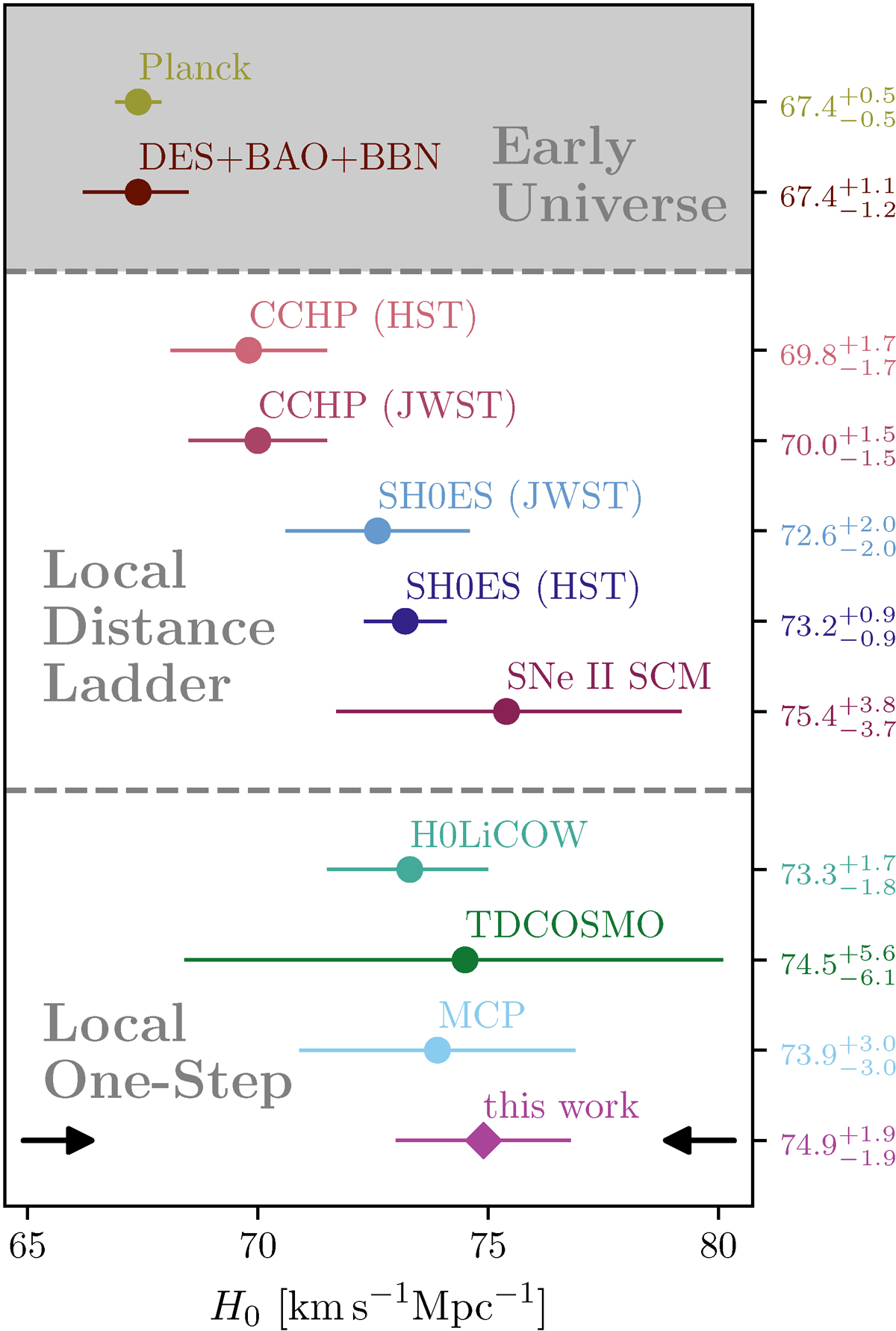Fig. 11.

Download original image
Comparison of our Hubble constant (H0) with other precise, recent measurements. Our result is shown in purple and highlighted with black arrows. Early universe constraints include CMB anisotropies and lensing from Planck (Planck Collaboration VI 2020), as well as a CMB-independent measurement from BAO and BBN (Abbott et al. 2018). Local distance-ladder measurements are shown from the SH0ES project using HST data with Cepheids (Breuval et al. 2024) and from the CCHP project using HST data with the TRGB (Freedman 2021). Additionally, for the newer JWST data, we include results from both SH0ES (Riess et al. 2024) and CCHP (Freedman et al. 2025), where each combines three distance indicators: Cepheids, JAGB stars, and the TRGB. Both projects incorporate systematic uncertainties, added in quadrature, in their measurements using HST and JWST data. We also include another distance-ladder result, which uses SNe II standardised through the SCM and is calibrated by Cepheids and the TRGB (de Jaeger et al. 2022). In contrast to the SH0ES and CCHP measurements, this result does not include systematic uncertainties. For one-step measurements, we show results from time-delay lensing by H0LiCOW (Wong et al. 2020) and TDCOSMO (Birrer et al. 2020), megamasers from the MCP (Pesce et al. 2020), and our own tailored EPM measurement. Compared to the H0LiCOW analysis, TDCOSMO relaxes assumptions on the lens mass models and therefore has larger uncertainties. Among the one-step methods, only the lensing measurements include systematic uncertainties.
Current usage metrics show cumulative count of Article Views (full-text article views including HTML views, PDF and ePub downloads, according to the available data) and Abstracts Views on Vision4Press platform.
Data correspond to usage on the plateform after 2015. The current usage metrics is available 48-96 hours after online publication and is updated daily on week days.
Initial download of the metrics may take a while.


